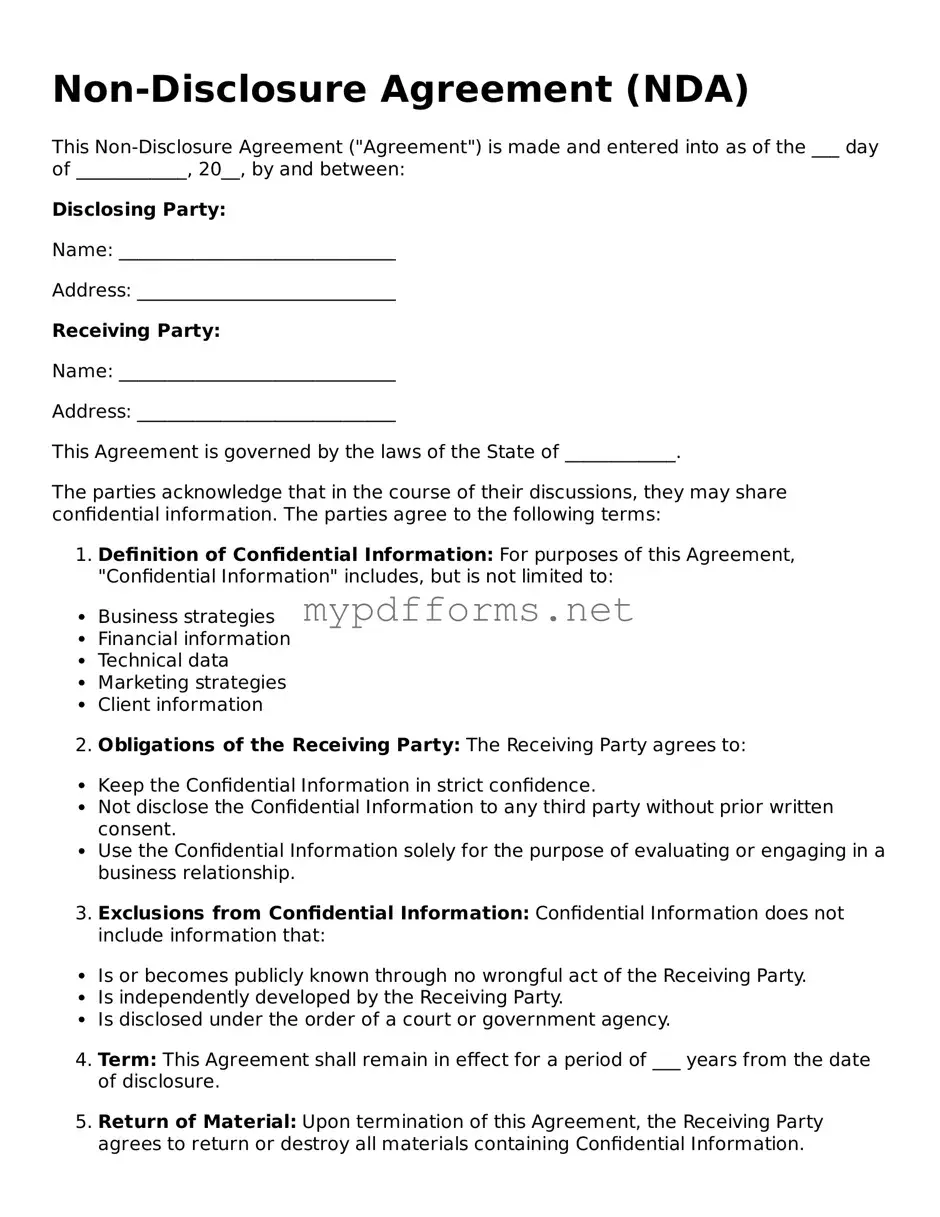In a world where information is a valuable commodity, protecting sensitive data has become essential for individuals and businesses alike. The Non-disclosure Agreement (NDA) serves as a crucial tool in this regard, establishing a legal framework that ensures confidentiality between parties. Typically, an NDA outlines the specific information that must remain confidential, the obligations of the parties involved, and the duration of the confidentiality requirement. It can apply in various contexts, such as employment relationships, business negotiations, and partnerships, safeguarding trade secrets, proprietary information, and other sensitive materials. The form often includes clauses that specify the consequences of breaches, providing a clear understanding of the legal ramifications for violating the agreement. By signing an NDA, parties commit to protecting each other's interests, fostering trust and collaboration while minimizing the risk of information leaks that could harm competitive advantage or personal privacy.
